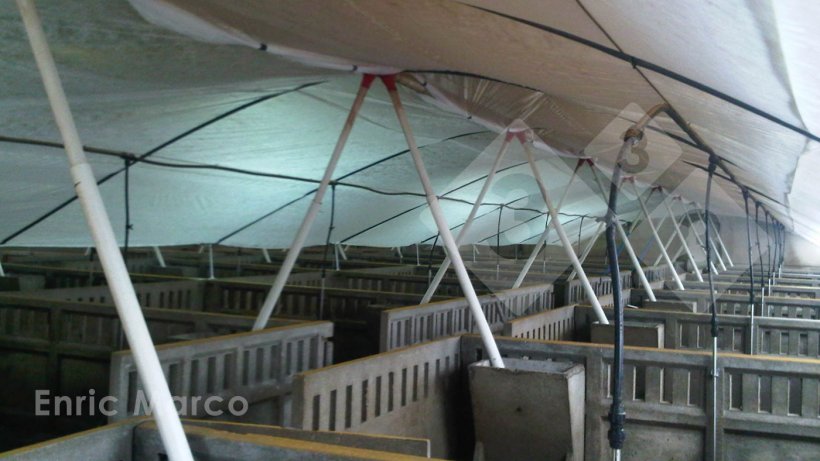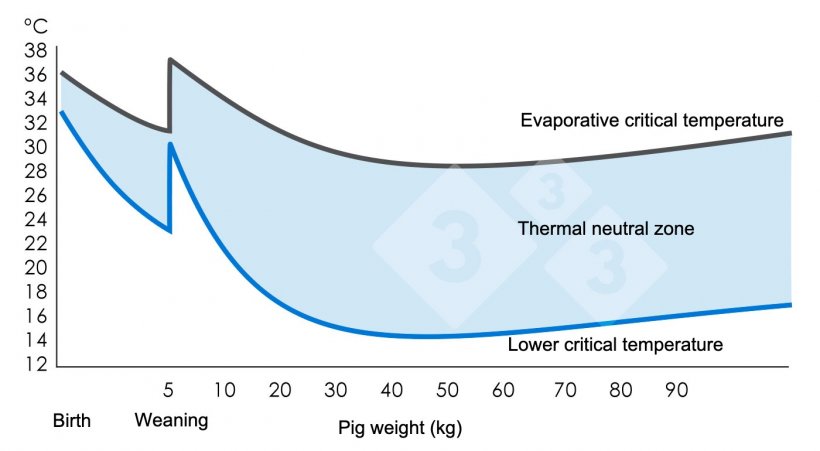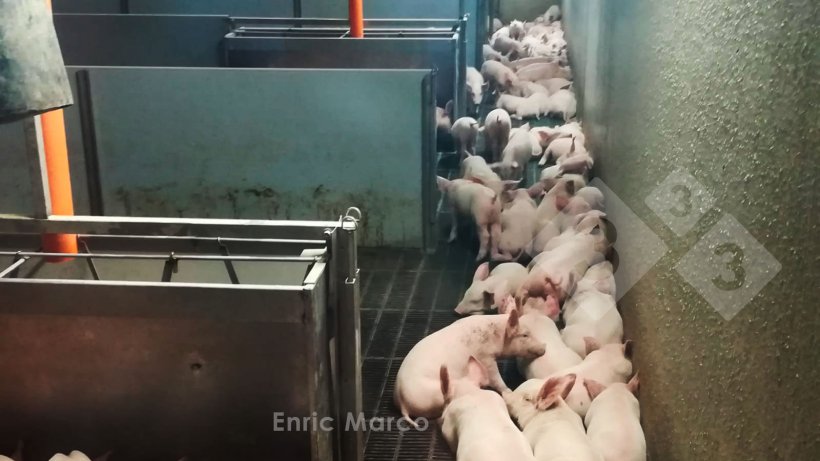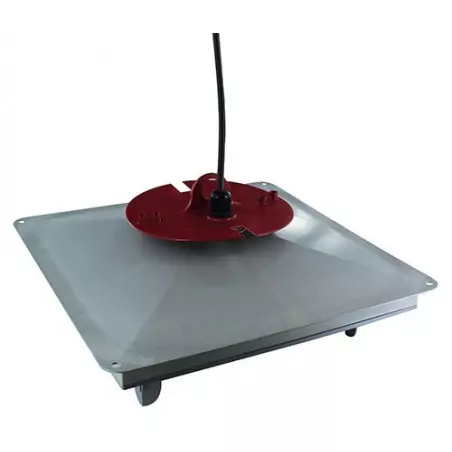Pigs react to high and low temperatures. But this reaction will be related to the thermal sensation they perceive. It is not an exact reflection of what the thermometer is reading. The thermal sensation is a function of temperature, humidity, flooring type, ventilation rate, breed type, diet composition and intake, etc. By observing the pigs we can know if they are within the thermal comfort zone or thermoneutral zone; the lower limit will be the lower critical temperature (LCT) and the upper limit will be the evaporative critical temperature (ECT). When the temperature is below the LCT, pigs will huddle together, sleep laying on their feet to conserve temperature, and increase their daily intake to generate more body heat, thus impairing feed conversion.

Photo 1. Use of thermal covers in finishing.

Conversely, if the temperature exceeds the ECT the pigs will rarely be dry. They will be dirty and wet in order to cool down and will lie stretched all the way out to lose maximum heat. They will drink more water and start to use mechanisms to prevent their body temperature from rising, such as increasing breaths per minute to 50-60 to evaporate more water and thus cool the body, at the same time the daily feed intake is reduced and consequently so is the growth. In more severe cases, feed conversion will also be impaired. If the ambient temperature continues to rise, there will come a point at which it will be impossible to maintain body temperature, this point is called the upper critical temperature (UCT). Thermal increases above this point will lead to a rapid rise in body temperature and, as a final consequence, death.

Graph 1. Thermal neutral zone or thermal comfort zone (where the pig feels comfortable). Ministry of Agriculture, Fisheries, and Food (1983). Pig Environment. Great Britain: MAFF. (Volume 2410).
One must consider that the thermal sensation of pigs depends on the ambient humidity, air currents, and their daily intake. Thus, for example, in high temperature and high humidity conditions, their cooling capacity will be reduced and the detrimental effects of the temperature on production will be greater. The same will happen in winter, in conditions of high humidity or in the presence of air currents, the thermal sensation will be diminished, even more so negatively affecting the feed conversion ratio.

Photo 2. Pigs avoid air currents.
The amount of heat generated for tissue deposition depends on the partitioning of metabolizable energy (ME) in protein and lipid synthesis, and on the biochemical origin of the nutrients used to satisfy the requirements. In fact, the energy efficiency (net energy:metabolizable energy ratio) for protein deposition is lower than for lipid deposition (60 vs. 80%) and the efficiency of utilization also varies with the characteristics of the diet: thus the efficiency for fats is 90% while for carbohydrates it would be 82% and 60% for fiber and protein. Consequently, the current genetic lines with high muscle growth are much more sensitive to high temperatures than the previous ones. Hence, cooling systems are becoming more and more important in the finishing phases in order to maintain performance during the warm months. As for the feed, to reduce the effect of heat it would be preferable to use diets low in protein and fiber because they will generate less heat. An excess of protein in the diet in summer will be economically much more detrimental since it not only increases the feed cost without obtaining anything in return, but it will cause the pigs to generate more heat, increasing the detrimental effects of the environmental temperature.
Or browse the tool to identify the cause of your elevated feed conversion ratio (FCR):
Return to the beginning of the tool 








